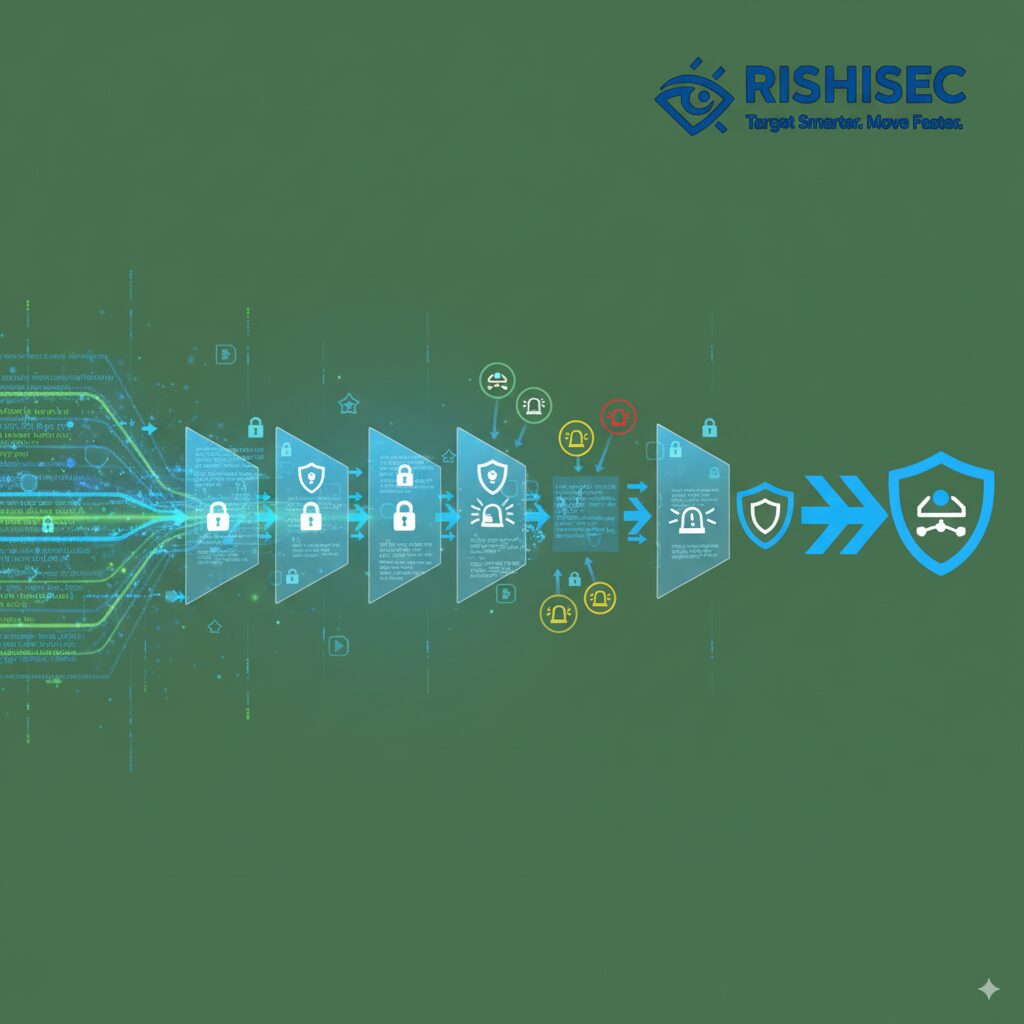Journalists often work on sensitive investigations, report on powerful actors, or cover topics where lives may be at stake. In this high-stakes environment, secure journalist communication is a critical requirement. Whether you’re working with whistleblowers, covering national security stories, or interviewing sources in a war zone, the ability to keep conversations confidential without compromising operational speed is essential.
This article examines the evolving threat landscape confronting investigative journalists, outlines the best tools and practices for maintaining security, and demonstrates how to strike a balance between speed and operational security, without compromising either.
The Risks of Unsecured Source Communication
When source communications aren’t protected adequately, the consequences can be irreversible. Digital surveillance, metadata leaks, and third-party breaches may expose whistleblowers to legal jeopardy or result in physical harm. Several high-profile cases, including the Snowden revelations and the Pegasus spyware exposé, remind us of how modern surveillance infrastructure can compromise both journalists and their sources.
Major risk vectors include:
- Metadata exposure: Even encrypted messages may give away who contacted whom and when.
- Endpoint security breaches: A source or journalist’s device might be vulnerable to malware used by sophisticated threat actors.
- Platform vulnerabilities: Many popular communication platforms offer partial encryption or no protection against server-side data harvesting.
Government and Adversary Threat Models
Government entities often have access to lawful intercept capabilities, technical signals intelligence (SIGINT), and coercive powers. In authoritarian regimes or conflict zones, surveillance isn’t speculative—it’s active and persistent. Likewise, criminal organizations or hostile networks may conduct OSINT-driven targeting of journalists to steal information or control narratives.
Tools Every Journalist Should Use for Secure Communication
Securing journalist-source conversations starts with choosing the right technology stack. Below is a categorised list of tools that enable trusted, encrypted, and metadata-minimised communications.
1. Secure Messaging Platforms
- Signal: End-to-end encryption, disappearing messages, and minimal metadata retention. Open-source and trusted.
- Session: Built upon the decentralized Oxen network, Session routes messages through onion routing with no phone number required.
2. Encrypted Email
- Tutanota: Encrypted email provider that doesn’t log IP addresses.
- ProtonMail: Offers both web-based encryption and zero-access architecture.
3. File-Sharing and Document Handling
- SecureDrop: Designed specifically for source leaks to media outlets. Hosted on Tor hidden services.
- OnionShare: Enables anonymous, encrypted file and message sharing hosted via Tor.
4. Privacy-Based Operating Systems
- Tails OS: A portable OS that routes all connections through Tor and leaves no trace on the host machine.
- Qubes OS: Employs compartmentalization to isolate environments and manage risk.
Introducing Kindi: Fast, Secure, Collaborative OSINT Investigations
While most messaging tools focus solely on encryption, Kindi adds something critical to the journalist toolkit—speed and collaboration in secure investigations. Built for OSINT workflows, Kindi enables real-time data enrichment, fast link analysis, and secure data sharing without compromising on encryption or provenance tracking. Teams can trace connections across domains, visualize entities within seconds, and jointly work on lead development securely.
Unlike traditional tools, Kindi is optimized for collaborative trust-building across red teamers, SOC analysts, and field reporters. If you’re conducting sensitive research, from identifying fake networks to mapping disinformation campaigns, Kindi provides you with the control and clarity to move quickly without exposing yourself or your sources.
Operational Guidelines for Secure Journalist Communication
Technology is only one piece of the puzzle. Journalists also need disciplined operational practices to avoid slipping up with even the most secure tools.
1. Threat Modeling Per Story
Risk varies by assignment. A city council story has a different threat model than an investigation into organized crime. Consider the source’s profile, adversary capability, and jurisdiction. Adjust operational security procedures accordingly. This is a key step covered in RishiSec’s OSINT training modules.
2. Burner Practices
Use single-purpose devices for high-risk conversations. Employ “burner” phones or laptops running hardened OS like Tails. Avoid reusing infrastructure: this limits traceability and reduces metadata footprints. Also, never log into personal services from these devices.

3. Non-Digital Safe Channels
In circumstances where digital compromise is highly probable, build in fallback analog methods:
- Dead drops
- Face-to-face meets in secure locations
- Pre-arranged safe phrases or check-ins
These may feel outdated but continue to serve as indispensable for offline operational security.
4. Two-Person Integrity and Role Separation
It’s essential that not all details be concentrated in one journalist. Compartmentalize sensitive aspects across team members. If necessary, consider assigning distributed roles for data handling, identity verification, and final output creation. This guards against accidental disclosure or device compromise.
Collaboration Doesn’t Have to Kill Security
Journalistic investigations often involve cross-disciplinary teams uncovering disinformation networks or performing forensic analysis. Secure collaboration capabilities—particularly real-time—ensure the team can share discoveries as they occur without leaking context or introducing central points of failure.

Kindi enables secure tagging, annotation, and mapping of interconnected OSINT findings, including WHOIS data, Telegram leaks, and CVE mentions. This reduces friction in team-based analysis and eliminates risky information-sharing practices over email or unsecured channels.
Secure Identity Verification for Sources
It’s not just about protecting the source; it’s also about verifying the authenticity of the person contacting you. Tools such as reverse-image search, PGP key lookups, and entity origin tracing techniques can be used to vet sources before engaging in-depth.
Red Flags to Watch:
- Vague timelines or shifting story details
- Poor understanding of context they claim to be part of
- Persistent request to shift platforms quickly, especially toward less secure ones
Data Minimization Best Practices for Journalists
Adopt a minimalist approach: collect only what’s necessary and store it only as long as you must. Encrypt everything at rest and separate personally identifiable information (PII) from report content where feasible.
If you must retain data briefly for cross-referencing or follow-ups, monitor it tightly. Consider using air-gapped storage or physically isolated drives for high-sensitivity data, mainly when operating near foreign intelligence collection zones.

Audit and Red Team Your Process
Have security-conscious peers test your opsec workflows. Some organizations have begun integrating red team/blue team exercises even into journalism schools or nonprofit newsrooms. While not common yet, these practices build future-ready communicators who know how to think adversarially for source protection.
Stay Current with Threats
Digital threats to journalists evolve rapidly. Relying on last year’s tools or yesterday’s procedures is dangerous. Incorporate regular threat briefing cycles, keep track of state-level adversary capabilities, and subscribe to updates from operations security communities or publications like Columbia Journalism Review and GIJN.
Conclusion: Empower Speed Without Sacrificing Source Safety
As journalists navigate hostile information environments and state-level surveillance, the importance of secure journalist communication becomes non-negotiable. Secure messaging apps, strong operational tactics, and collaborative OSINT platforms like Kindi allow investigative work to remain agile, responsible, and safe.
If you’re looking to deepen these skills—from building secure workflows to verifying hard-to-trace sources—consider hands-on, scenario-based learning. RishiSec offers the training you need to operate fearlessly and ethically in today’s digital minefield.
Want to strengthen your OSINT skills and other ones you can suggest? Check out our OSINT courses for practical, hands-on training.
FAQ
What is secure journalist communication and why is it important?
Secure journalist communication refers to using encrypted, private channels to protect source identity, content integrity, and confidentiality of exchanges. It’s vital to shield whistleblowers, avoid surveillance, and maintain ethical sourcing standards.
What tools are best for encrypted conversations with sources?
Signal is a strong choice for secure messaging. For file transfers, OnionShare and SecureDrop offer exceptional privacy. Journalists should pair these with privacy-centric OS like Tails or Qubes for full-stack protection.
How can journalists balance speed with communication security?
Tools like Kindi combine real-time link analysis with encrypted collaboration. This enables journalists to investigate quickly across teams while preserving operational integrity. Using secure, intuitive tools reduces friction without cutting corners.
How should I verify if a source is legitimate?
Use OSINT methods such as reverse image searches, timeline correlation, and metadata validation. Rely on multiple identity signals rather than single points of contact to confirm legitimacy before deeper engagement.
Are common apps like WhatsApp or Telegram secure enough for investigative journalism?
While WhatsApp offers end-to-end encryption, it still collects metadata. Telegram doesn’t encrypt group chats by default. For sensitive communication, dedicated apps like Signal or Session offer better security models and policy protections.




